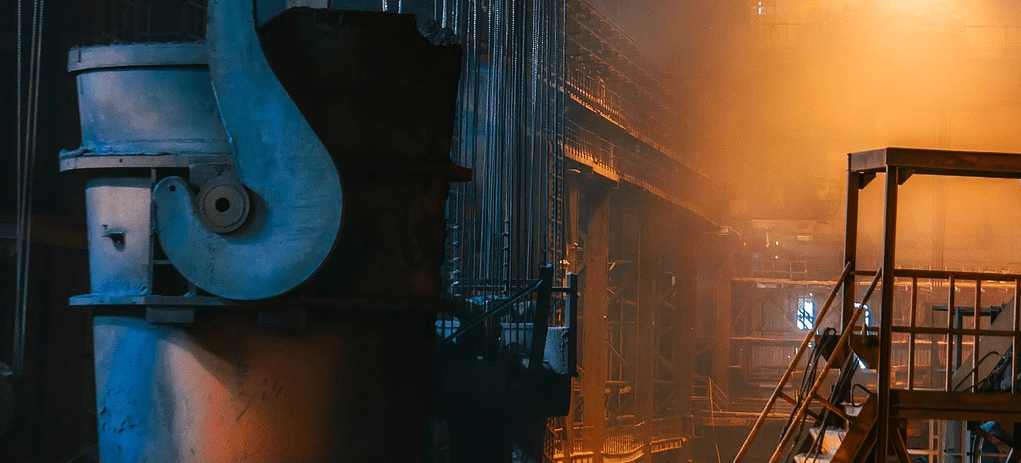The solar industry is getting no rest from the aggressive trade policies of the Trump Administration. On the morning after the July 4th holiday weekend, the U.S. Department of Commerce announced a preliminary determination which could affect racking and tracking systems makers, including those who suffered less consequence from earlier rounds of global tariffs on steel & aluminum.
That’s because the global Section 232 tariffs on steel and aluminum largely pertained to unfinished steel products, whereas tracker makers and construction contractors revealed to pv magazine that many of the tracking systems which increasingly dominate the large-scale solar market involve more highly processed steel products.
And that’s what Monday’s decision by the Commerce Department focuses on: various kinds of fabricated structural steel parts from Canada, China and Mexico, which together represented $2.2 billion worth of imports into the United States last year.
Much to the relief of the Canadian steel industry, Canadian structural steel was found to have received minimal levels of the kinds of subsidies that are prohibited under international trade rules, and as a result will likely suffer no tariffs.
However Chinese and Mexican producers did not get off so easy, with Department of Commerce assigning 30%-177% in preliminary subsidy rates to Chinese steel makers, and 0-74% to Mexican steel makers. Together, these two nations exported a full $1.5 billion in structural steel products to the United States last year.
In both cases, the highest subsidy rates (177% and 74%) were reserved for those companies that did not respond, and a full list of these can be found in a fact sheet on the Department of Commerce website. And while no tariff rates have been set at this time, trade authorities will now begin collecting deposits on these products when they come into the United States from China and Mexico.
Which products, which manufacturers?
As to whether or not the structural steel products that were the subject of this preliminary ruling are actively used by racking and tracking systems makers, that is still unclear. Only one of the three companies in this area contacted by pv magazine responded by press time, and Solar Energy Industries Association (SEIA) stated that it is “still assessing the potential impact” of these proposed tariffs.
However, one response that we did receive indicates that there may be trouble ahead. “This does not affect PanelClaw, but I am sure that there are tracker companies with structural steel fabricated components coming out of China or Mexico,” PanelClaw CEO Costa Nicolaou told pv magazine.
In past tariff cases, NEXTracker has noted that the global network of suppliers utilized by parent company Flex gives it more options when it comes to supply chains, but NEXTracker also did not respond to requests for comment.
It is impossible for anyone but trade lawyers and the companies that import these products to make a final determination as to whether any particular import code corresponds to products that are used by any particular manufacturer. However, if the Section 232 tariffs are any guide this could raised prices for products across the board, and it is likely that manufacturers will try to shift any supply chains that are affected.
More to come?
A final ruling on this case is scheduled for November 19, and this may not be the last time that the solar industry and its supply chains have to deal with trade action. This was emphasized by the U.S. Department of Commerce in its announcement:
The strict enforcement of U.S. trade law is a primary focus of the Trump Administration. Since the beginning of the current Administration, Commerce has initiated 172 new antidumping and countervailing duty investigations – this is a 219 percent increase from the comparable period in the previous administration.
There is an irony here that while these policies are being implemented with the stated aim of supporting U.S. manufacturing, the racking, tracking and mounting systems makers which represent a huge portion of U.S. solar manufacturing, as well as other U.S. industries, are likely to suffer collateral damage.
This content is protected by copyright and may not be reused. If you want to cooperate with us and would like to reuse some of our content, please contact: editors@pv-magazine.com.









Maybe it’s time to switch to composites, lighter and doesn’t rust?
Trump’s tariffs were political and I was just reading US steel mills are shutting down because demand has shrunk as US manufactures raised prices to offset steel like in washing machines, cars has cut their production from higher prices.
Th steel tariffs should have just been on China and with our allies to get China to change.
But the incompetent fool in office has no clue. So another 18 months of erratic policies, lower world economy.
Jerry, the market has always had ‘tensions’ on import/export demands. Latest greatest, tariffs on imported solar PV panels. The ‘World’ manufacturing fix? Let’s get the more efficient bi-facial panels past the tariff mandate. What is the manufacturing sector doing? Firing up bi-facial solar PV manufacturing lines, while selling their mono solar PV panels on the World market for even less. All of this doesn’t stop the momentum of cheap solar PV and wind generation. Energy storage is the adder that makes intermittent non-fueled generation resources dispatchable and relegates the old “fueled” generation resources to the scrap pile.